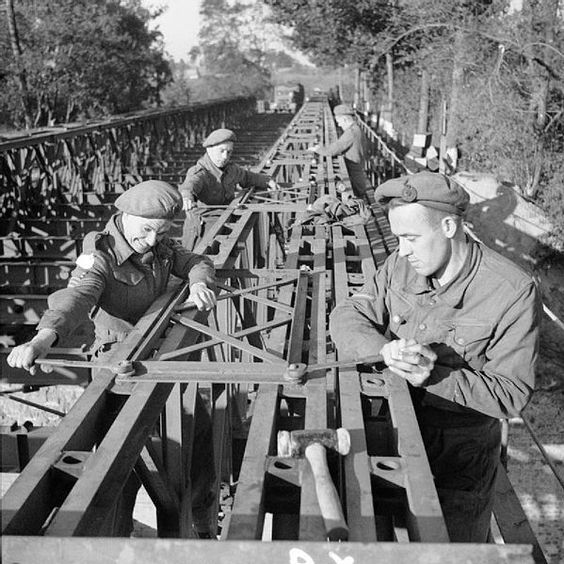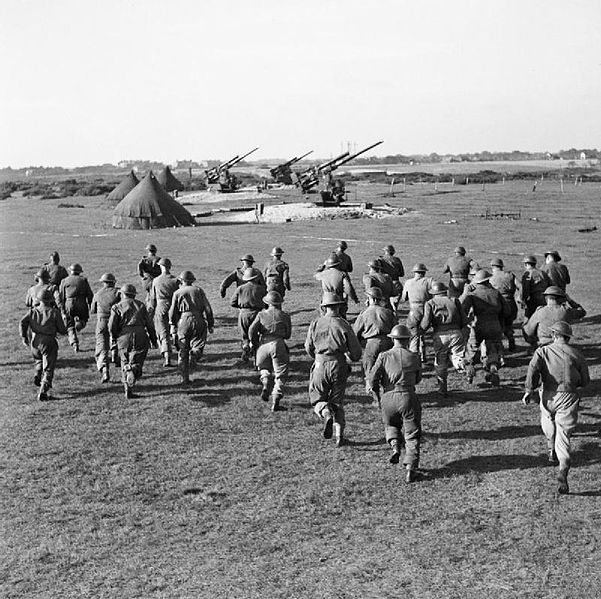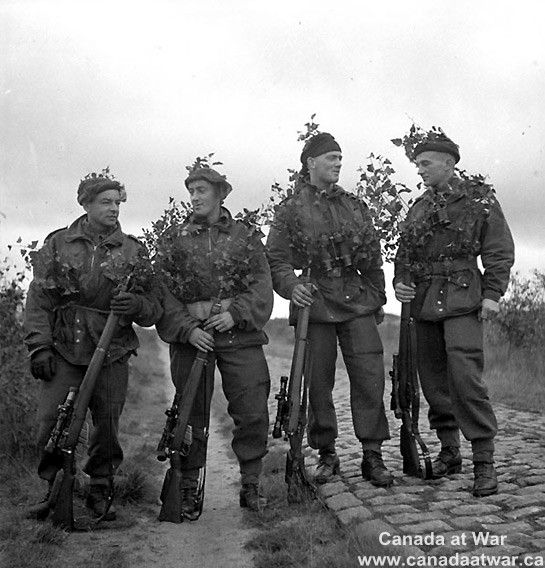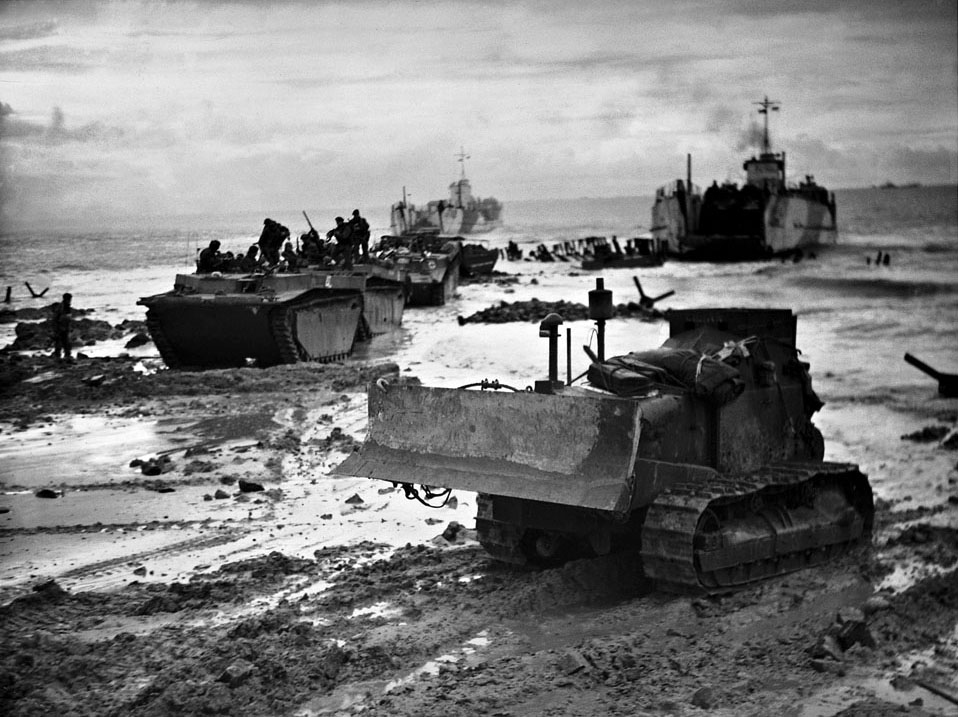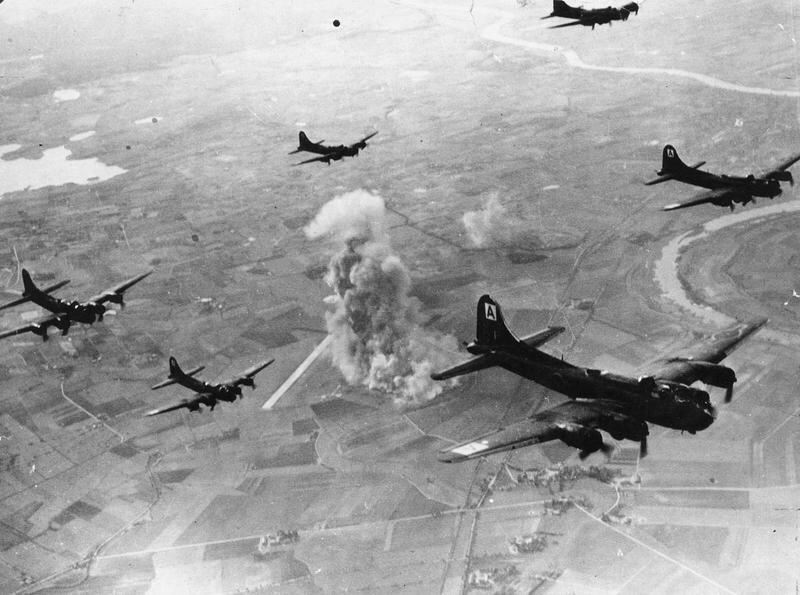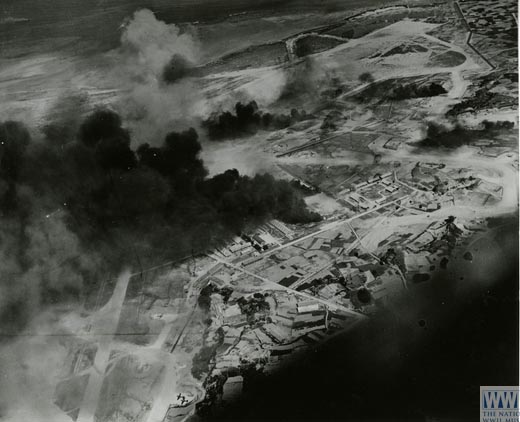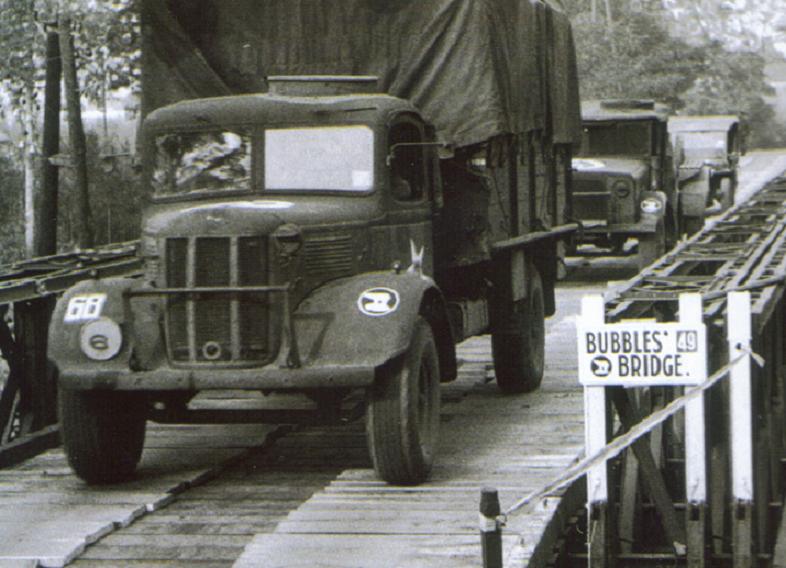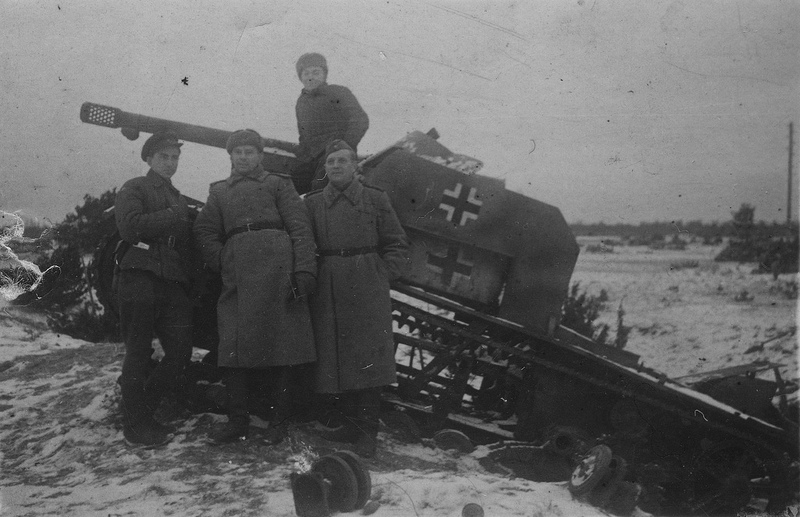Air Operations, Carolines
25 11th Heavy Bomb Group B-24s attack the Truk Atoll.
[Air Operations, CBI
BURMA- 9 10th Air Force B-25s attack bridges and targets of opportunity in the Lashio area.
- More than 50 10th Air Force P-47s attack bridges at Manyut and Mawlu, Japanese Army positions and the town area at Mawhun and Nyaunggon, Japanese Army positions near Mawhun, and several targets around Katha.
- 3 308th Heavy Bomb Group B-24s attack shipping along the eastern Yangtze River.
- 2 341st Medium Bomb Group B-25s attack targets near Mangshih.
- 29 14th Air Force P-40s and P-51s attack numerous targets in southeastern and south-central China.
Air Operations, East Indies
- FEAF B-25s, A-20s, and fighter-bombers attack Boela and Kairatoe on Ceram, Liang on Amboina, and Namlea onBoeroe.
- B-25s and fighter-bombers attack Hate Tobako airfield and the Lolobata airfield on Halmaheras and nearby targets of opportunity.
Air Operations, Europe
RAF BOMBER COMMANDDaylight Ops:
Minor Ops:
- 2 Wellingtons and 2 Liberators fly uneventful signals patrols without a loss.
- 435 aircraft are sent to Bochum. Included in the aircraft total are 375 Halifaxes, 40 Lancasters and 20 Mosquitos of Nos. 1, 4, 6 and 8 Groups. The raid is not successful. The target are is covered in cloud and the bombing is scattered.
- 4 Halifaxes and 1 Lancaster are lost.
- 47 Mosquitos are sent to Wilhelmshaven, 5 to Krefeld, 4 to Saarbrücken and 3 to Düsseldorf, and there are 57 Mosquito patrols and 34 RCM sorties.
- There are no losses.
GERMANY:
- 329 1st Bomb Division B-17s attack ball-bearing plants at Schweinfurt.
- 360 2nd Bomb Division B-24s attack marshalling yards at Koblenz.
- 210 3rd Bomb Division B-17s attack a marshalling yard at Mainz.
- 148 3rd Bomb Division B-17s attack an aircraft-industry target at Gustavsburg.
- 1 B-24 is lost; none of the 811 VIII Fighter Command escort fighters is lost
GERMANY:
- 30 9th Bomb Division bombers attack a rail bridge at Euskirchen.
- Dive-bombers dispatched to attack airdromes in western Germany are recalled because of bad weather.
ITALY:
- XII Fighter Command fighter-bombers attack rail crossings, roads, and transportation targets.
- The 15th Air Force and 12th Air Force medium bombers are grounded by bad westher.
Air Operations, New Guinea
- V Bomber Command B-25s attack Samate.
- A-20s and V Fighter Command fighter-bombers attack the airfields at Faan and Langgoer.
- P-40s attack Manokwari.
Air Operations, Volcano Islands
18 30th Heavy Bomb Group B-24s based on Saipan attack Iwo Jima.
[Allied Planning
Adm Nimitz issues the first directives for the invasion of Iwo Jima, fixed provisionally for January 20, 1945. Adm Spruance is appointed to command the operation, together with Vice-Adm Richmond K. Turner in charge of the amphibious force and Gen Holland M. Smith, who will command the expeditionary corps. The forces will be assembled in Hawaii and the Marianas.
[China
Chiang Kai-shek in a memorandum denounces Allied strategy in Southeast Asia. The blame for the loss of southeastern China, where the Japanese are making rapid progress in the area northwest of Hong Kong, which is where the American airfields are sited, is put on Gen Stilwell, but indirectly on Pres Roosevelt.
[Diplomatic Relations
Churchill and Eden visit Moscow for talks with the Russians on arrangements for the political future of eastern Europe. The conference will last until October 20. For some of the discussion there are representatives of the exile, London Polish government present. They achieve no real concessions from the Soviets. Similarly Stalin insists that Bulgaria and Rumania are to remain a Soviet sphere of influence entirely. Greece is to come under British sway and in Hungary and in Yugoslavia influence is to be divided. The western powers do not feel able to press Stalin any harder than this because they value his promise to join the war against Japan as well as his continuing help against a still undefeated Germany. Stalin will in fact scrupulously stick to his word about keeping out of Greece. As far as concessions are concerned, the Americans are much more accommodating to the Russians and less far-seeing than the British statesman.
The Dumbarton Oaks conference ends and plans are concluded for collective security measures to be organized by the United Nations.
The 2nd Moscow Conference opens. Attended by Churchill, Stalin, Harriman and their advisors, it will concern the USSR's entry into the war against Japan; post-war division of the Balkans; and the future of Poland. The main focus of the conference is Soviet influence in a post-war Eastern Europe. Stalin debates with Churchill the influence that Britain and the USSR should have in the Balkans. Churchill writes details on a piece of paper that divides Romania, Greece, Yugoslavia, Hungary and Bulgaria between the Western Allies and the USSR. Recognizing the realities of the situation in Eastern Europe, Churchill gives Stalin 90 percent of Romania, 10 percent of Greece, 50 percent of Yugoslavia, 50 percent of Hungary and 75 percent of Bulgaria (subsequent debates between the British and the Russian foreign secretaries altered the percentages of Bulgaria and Hungary to suit the Russians). Churchill's main interest is Greece, and, with Stalin's approval, he authorizes British soldiers to be dispatched there. But Churchill's proposal of a meeting between the leader of the Polish government in London and the Soviets to determine a Polish-Soviet frontier comes to nothing.
[Eastern Front
FINLANDUnits of the Soviet XCIX Rifle Corps begin to cross the Titovka River on log rafts and at fording sites, though German pockets are still fighting on the east bank of the river. The absence of roads is seriously affecting the Soviet advance by delaying ammunition re-supply and the movement of artillery units. This is seriously depleting artillery support for the infantry. Overhead, the weather permits the Soviets to fly over 1,000 air support sorties. The Germans respond with 200 air sorties.
SOUTHERN SECTORAfter heavy fighting the 3rd Hungarian Army completely disintegrates, the 53rd Army having advanced more than 50 miles in 3 days of fierce fighting.
[Greece
More British troops, under the command of Gen Ronald Scobie, land at Corinth. The Germans retain possession of the port of Piraeus.
[Marcus Island
A US Task Force of cruisers and destroyers commanded by Rear-Adm A. E. Smith is led to shell the island, 800 miles east of the Bonin Islands. The 15-hour bombardment is the first surface ship attack directed at the island, which offers the US a forward base in the western Pacific less that 1,000 miles from the Japanese mainland.
[Mediterranean
The US tank landing craft LCT-459 sinks after running aground off the western coast of France.
[Pacific
In a wide-ranging operations against Japanese shipping by US submarines in the South China Sea, Becuna (SS-319) damages the tanker San Luis Maru and teams with Hawkbill (SS-366) to sink the merchant tanker Tokuwa Maru (1943t), Croaker (SS-246) sinks the merchant cargo ship Shinki Maru (2211t) west of Kyushu, and Sawfish (SS-276) sinks the merchant tanker Tachibana Maru (6521t).
[Ryukyu Islands
US carrier aircraft take the war close to the Japanese mainland in a major air attack against naval and shore installations in the Ryukyu Islands. In an attack that achieves complete surprise, 75 Japanese aircraft are destroyed on the ground and 14 shot down. 38 ships are either sunk or damaged.
[United States, Planning
Adm Nimitz sends a directive to Lt-Gen Holland M. Smith, alerting his V Amphibious Corps to prepare plans for the capture of Iwo Jima.
Planning begins for Operation ICEBERG, the invasion of Okinawa.[MORE]
[Western Front
Troops from the Canadian 3rd Div land at Breskens on the south bank of the Scheldt opposite Flushing. The operations of the American 1st Div of VII Corps around Aachen continue, and so does the battle in the streets of Maizières-lès-Metz. Further south, in the sector of the American XII Corps, units of the 6th Arm Div try unsuccessfully to reach Létricourt. The advance of the American 80th Div along the banks of the Seille River is held up, and in this sector of the front activity ceases for almost a month. The US XX Coprs breaks off its attacks against Fort Driant near Metz, which has been a seemingly impenetrable obstacle.
[Images from October 9, 1944
|
|
|
|
|
|
|
|
